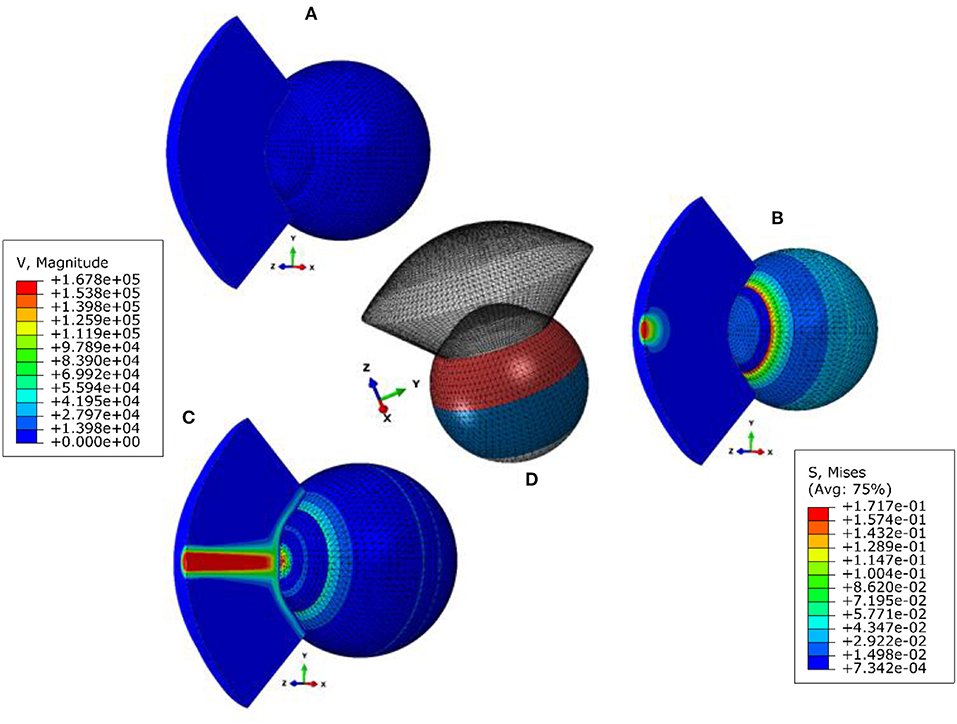Eye Pressure and Corneal Stiffness: New Algorithms for Improved Accuracy
Authors: Maklad, O., Eliasy, A., Chen, K.J., Wang, J., Abass, A., Lopes, B.T., Theofilis, V., and Elsheikh, A.
Journal: Frontiers in Bioengineering and Biotechnology
Publication Date: Aug 2020
Fluid structure interaction (FSI) model of the air puff test (A) stress-free configuration, (B) model after applying internal IOP, (C) model at highest concavity, and (D) is showing the different material sections in the eye model. The legend on the left is the magnitude of the air velocity in mm/s from the CFD model and the legend on the right is the magnitude of Von-Mises stress in MPa from the finite element model of the eye.
Summary:
When it comes to our eyes, measuring intraocular pressure (IOP) and understanding corneal stiffness is essential for diagnosing and treating various eye conditions, such as glaucoma, keratoconus, and ocular hypertension. Current techniques for measuring IOP, however, can be influenced by factors like corneal thickness and stiffness, leading to inaccurate results. Our research introduces two new algorithms that consider the fluid-structure interaction between the cornea and the air-puff used in non-contact tonometry, leading to more accurate estimations of IOP and corneal stiffness.
The first algorithm, fIOP, estimates the biomechanically corrected IOP, while the second, fSSI, calculates the Stress-Strain Index, which represents corneal material stiffness. Both algorithms showed no significant correlation with corneal curvature and thickness, and fIOP displayed no significant correlation with age. However, fSSI was found to be significantly correlated with age, which has been previously identified as strongly correlated with material stiffness.
Our study not only presents these novel algorithms but also validates them using clinical data from 476 healthy participants. By considering the fluid-structure interaction between the cornea and the air puff, our algorithms offer improved performance compared to current methods for measuring IOP and corneal stiffness. These advancements can aid in more accurate diagnoses and treatments for eye conditions, as well as enhancing our understanding of corneal biomechanics.

